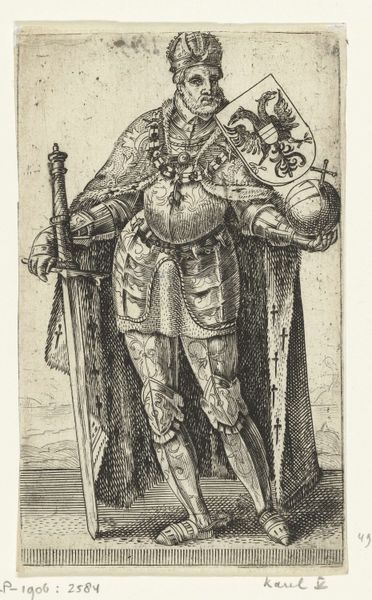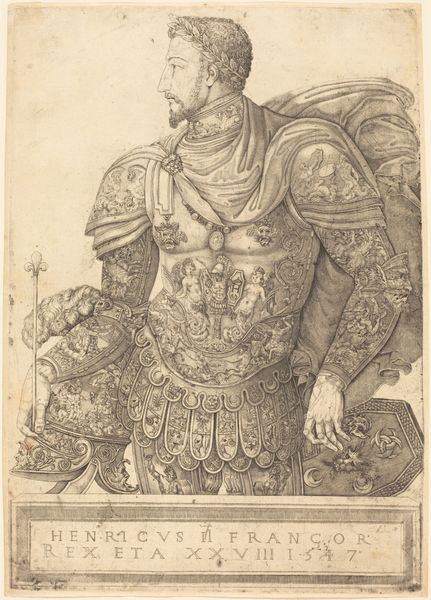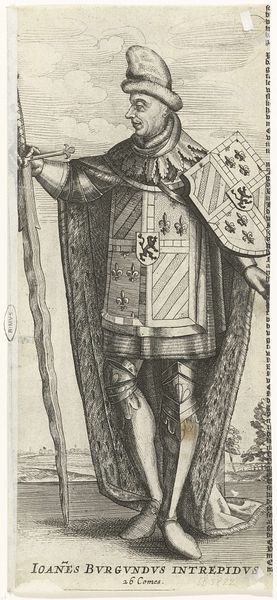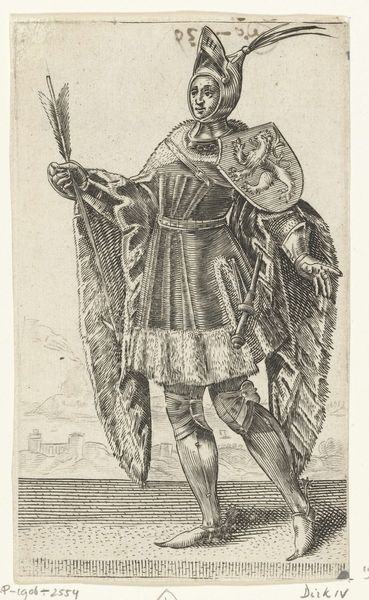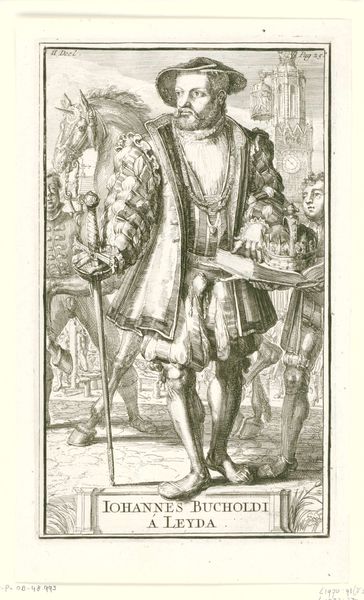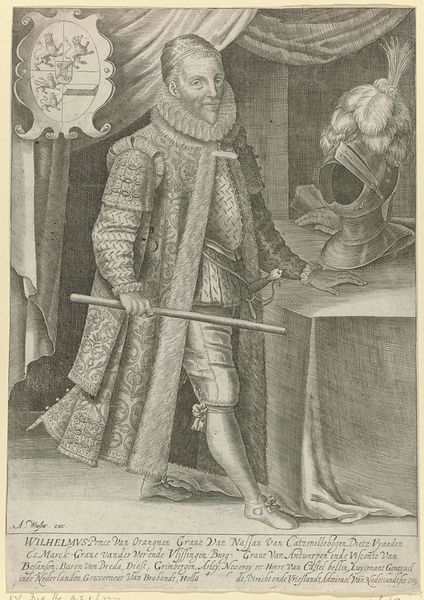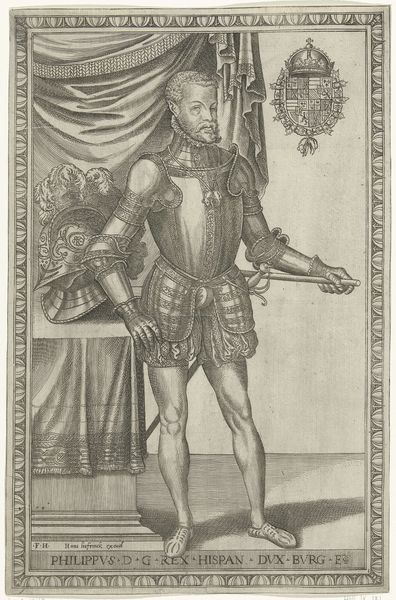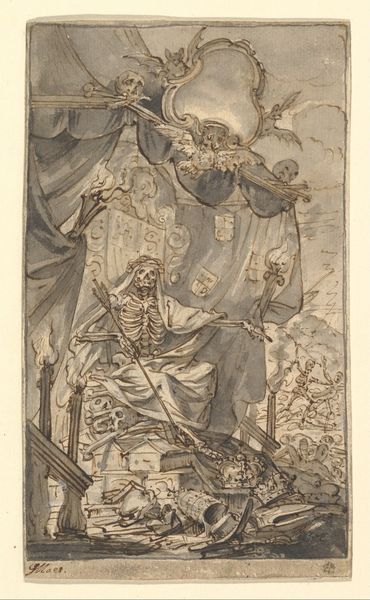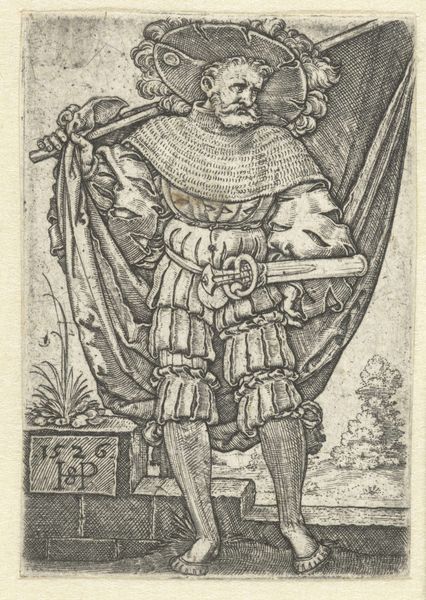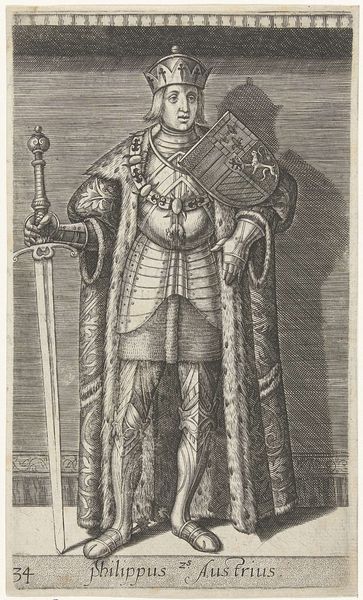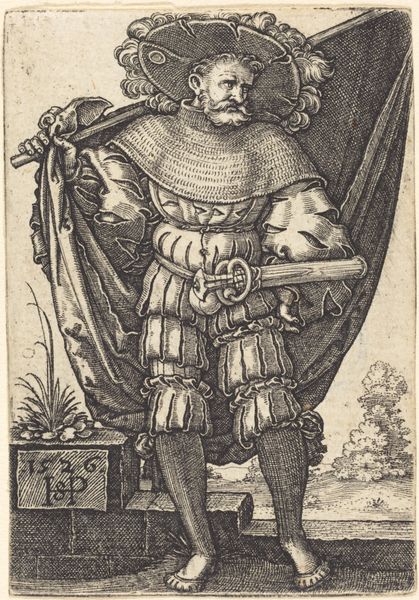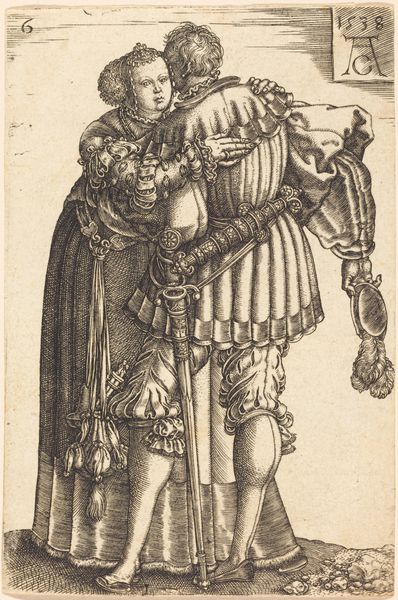
tempera, painting
#
portrait
#
medieval
#
tempera
#
painting
#
figuration
#
oil painting
#
history-painting
#
italian-renaissance
Dimensions: Engaged Frame: 11 11/16 x 5 1/4 in. (29.7 x 13.4 cm) Painted Surface: 9 5/8 x 2 15/16 in. (24.5 x 7.5 cm.)
Copyright: Public Domain
Curator: Standing before us is Pietro di Giovanni d'Ambrogio's "Saint Michael," painted sometime between 1430 and 1440. It's tempera on panel, a medium very typical of the period. Editor: It has a strangely vulnerable air for a warrior saint. He is encased head-to-toe in golden armour, yet his face and his averted gaze convey a gentle serenity rather than triumphant might. Curator: Let’s consider that armour. Each piece would have been painstakingly crafted by skilled artisans, a clear demonstration of the labor invested into representing divine power and the military might of the church. The gold leaf would have been intensely valuable too, which would have certainly added to the status. Editor: Precisely. The gold, the shining metal, this catches the light but also creates this association of ethereal protection and almost an untouchable purity, all tied together to convey Michael's role as heavenly protector. It seems carefully designed to elicit awe and respect in the viewer. And he’s trampling those…faces? What's with the faces? Curator: Those are depictions of devils, or possibly heretics being vanquished, according to sources, underscoring his triumph over evil. It is thought the painter may have had the collaboration of either Giovanni di Paolo, or Sano di Pietro for this panel. Editor: Well the fact that such collaboration happened shows the cultural influence between painters at the time, also impacting how artists viewed iconography in a cultural way to create artworks that would impress. Curator: Indeed, and I’m curious about the tempera. Pigments bound in egg yolk create such luminosity and allowed for minute details. That surface texture, the subtle brushstrokes. It invites close inspection of materials and process. Editor: For me, that close inspection reveals so much about cultural anxieties and hopes invested in this figure. The armour, the halo, the wings; all create a constellation of symbols that provide this visual manifestation of the eternal struggle between good and evil and this ideal of divine protection. Curator: It really brings home the effort invested to achieve this visual statement, this representation of power, through material means and process that makes this medieval picture so engaging. Editor: Absolutely, it's remarkable how a few symbolic elements rendered with skill create such an enduring, complex emotional narrative about faith and culture, something that the public craves.
Comments
No comments
Be the first to comment and join the conversation on the ultimate creative platform.
